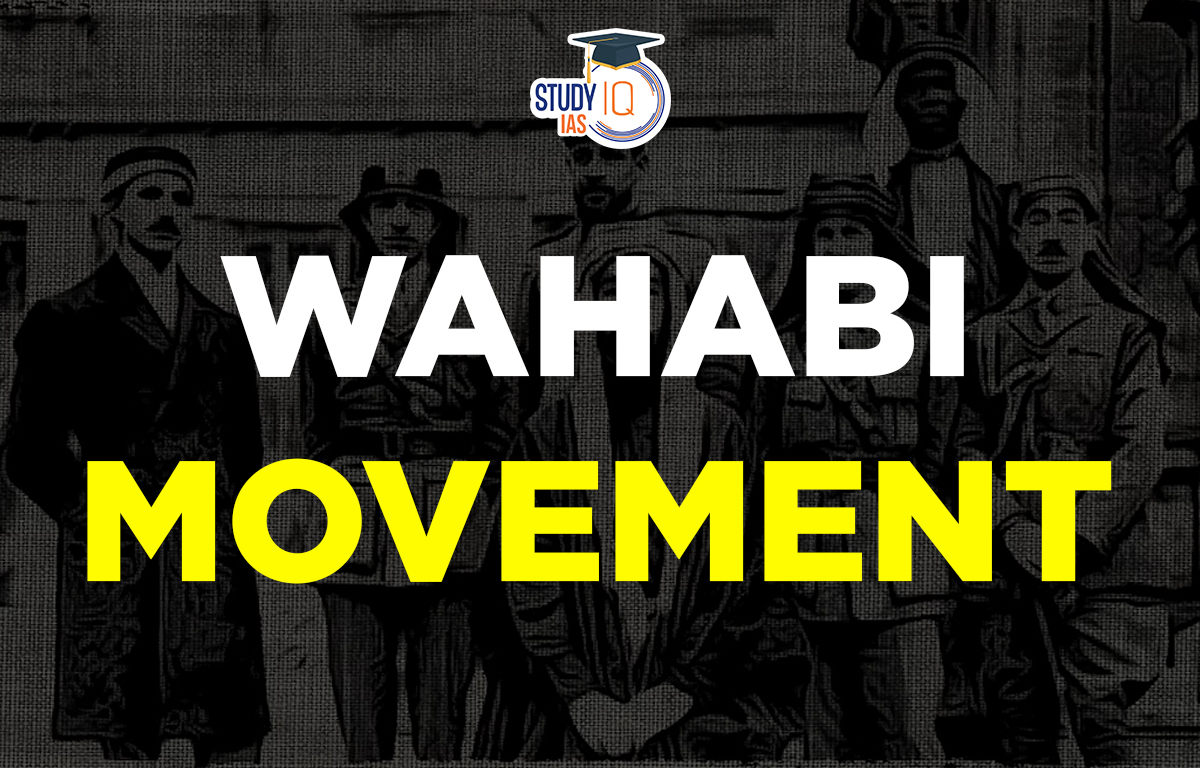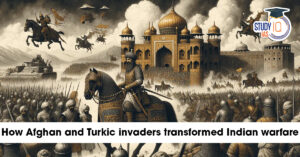Table of Contents
Wahabi Movement
Sayyid Ahmad founded the Wahabi Movement, a socioreligious movement, in Rae Bareli, India, around the beginning of 1820. One of the most well-known Sunni Islamic revivalist movements, the Wahabi movement sought to preserve the original spirit of Islam by shielding it from the influence of the British in Bengal and the Sikhs in Punjab. The Wahabi Movement is a key event in Indian history, and the IAS Exam has included numerous questions on it.
We have covered all the pertinent data and facts about the Wahabi Movement in this post. This article should be read by candidates preparing for the UPSC Exam in order to understand the goals, ideologies, and repression of the Wahabi Movement.
Read More: Akali Movement
Wahabi Movement History
Founder of the Wahabi Movement in India was Sayyid Ahmad (1786–1831). He was from Rae Bareli. In his writings, Sayyid Ahmad shows awareness of the expanding British presence in the nation; he saw British India as a daru’l harb (abode of war). He relocated to the North Western Frontier region in 1826 and set up a base of operations in the independent tribal belt.
Following his death in the Balakot conflict, the Movement temporarily slowed down, but his adherents—in particular Wilayet Ali and Enayat Ali of Patna—revived the cause and expanded its horizons. The Movement reached its zenith in the Ambala War (1863), which saw the English troops suffer significant losses at the hands of the Wahhabis. Because of this, the government implemented severe efforts to repress the Movement.
Investigations were started, the leaders were captured and given lengthy prison sentences, and their assets were seized. Although the Movement’s back was broken, it continued to pose a threat to the government.
Read More: Singh Sabha Movement
Wahabi Movement Meaning
This basically revivalist response to Western influences and the degeneration that had set in among Indian Muslims, appealing for a restoration to the true spirit of Islam, was inspired by the teachings of Abdul Wahab of Arabia and the sermons of Shah Walliullah (1702–63). He organized Muslims around the movement’s dual principles as the first Indian Muslim leader of the 18th century:
- The desire for harmony between the four schools of Muslim jurisprudence that had divided Indian Muslims (he attempted to combine the best aspects of the four schools);
- Recognition of the role of personal conscience in religion in circumstances where divergent interpretations of the Quran and the Hadis were derived.
Shah Abdul Aziz and Syed Ahmad Barelvi further popularized Walliullah’s teachings and gave them a political framework. The aim was to eradicate un-Islamic habits that had crept into Muslim society. Syed Ahmad promoted a return to authentic Islam and the kind of civilization that prevailed in Arabia during the time of the Prophet.
India was regarded as Dar-ul-Harb (the land of the kafirs), and it was necessary to transform it into Dar-ul-Islam (land of Islam). The movement’s first target population was the Sikhs of Punjab; however, after Punjab was annexed by the British in 1849, the movement’s attention turned to the British. The Wahabis were instrumental in spreading anti-British sentiment during the 1857 Revolt. In the 1870s, the Wahabi Movement vanished in the face of British military force.
Read More: Reform Movements by Parsi
Wahabi Movement Objective
The Wahabi Movement sought to restore the simplicity of Islam as a rebellious response to modernization’s influence on the faith. The Movement is centred on the Hadis and Quranic tradition of Islam.
Syed Ahmed founded the Movement with these two principles in mind. He wanted to reunite the four schools of Muslim thought that had previously divided Indian Muslims and he believed that everyone should understand their place in the faith. This means that people should comprehend Islam for themselves rather than impose the religion on them mindlessly and without thinking.
Read More: Temple Entry Movement
Wahabi Movement Anti-Sikh and Anti-British Movement
In Punjab, the Wahabi Struggle began to lead a socioreligious movement against the Sikhs. Sayyid Ahmad started the Jihad against the Punjabi Sikhs to assist the Movement. He stoked the Wahabi Revolt by releasing the anti-Sikh pamphlet Targhiz-ul-Jihad. The Punjabi king Ranjit Singh was deposed as a result of the Movement’s hatred.
The Movement moved towards the territory ruled by the East India Company after overthrowing the Sikh monarch in Punjab. However, during the Revolt of 1857, the British put an end to the Movement.
Read More: Reform Movements in Southern India
Wahabi Movement Suppression
One of the primary causes of the Muslim uprising in 1857 was the Wahabi Movement. The Movement was in charge of fomenting anti-British sentiments, which grew to represent a possible threat to the British Rulers of India. This threat prompted the British Government to combat the Movement in various ways in the 1860s. Armed Forces Operations were initiated. In addition to these, a number of legal suits were brought against Wahabi Revolt followers in India.
Wahabis were detained on multiple occasions between 1863 and 1865 for their support of the Movement, the most significant of which were the Ambala trial and the Patna trial in 1864. However, after the 1870s, the Movement entirely lost its vitality due to numerous close calls and strict measures.
Read More: Self-Respect Movement
Wahabi Movement UPSC
The establishment of Dar-ul-Islam in India was the aim of the Wahabi movement, which was led by and for Muslims. Never did it develop the traits of a nationalist movement. Instead, among Indian Muslims, it created a legacy of isolationist and separatist tendencies.
An active movement for socio-religious changes with strong political undercurrents emerged in Indo-Islamic society in the nineteenth century. The British launched major military operations against the movement’s supporters once the 1857 uprising turned into an armed conflict with them. The movement was fully defeated by 1870. In Indian history, the Wahabi Movement UPSC has been a crucial subject, and it has importance for the UPSC Exam.
Read More: Servants of India Society


 Birsa Munda Birth Anniversary 2025: Life...
Birsa Munda Birth Anniversary 2025: Life...
 Military Innovations of Afghans and Turk...
Military Innovations of Afghans and Turk...
 Self-Respect Movement, History, Objectiv...
Self-Respect Movement, History, Objectiv...

























